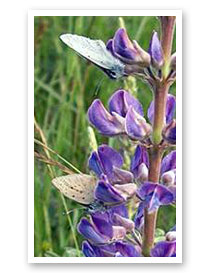 |
| http://www.orcanetwork.org/nathist/offshores.html |
Hannah Apa
 |
| http://www.westcoast.fisheries.noaa.gov/protected_ species/marine_mammals/killer_whale/esa_status.html |
Description:
The Orcinus Orca is a toothed whale who is related to the sperm and pilot whale. Commonly known for their black and white colors, the Killer whale is one of the most, if not the most, well known cetacean of marine life. The white spot behind the dorsal fin, or "saddle spot," is a way researchers track individuals' age and regional variation, as each white spot is unique to each whale. The saddle spot and a distinctive scaring on the dorsal fin is also how these marine mammals are catalogued for tracking and compared to the Northeastern Killer Whales. The SRKW are actually a large extended family composed of three pods: the J,K, and L pods. Within each pod there are sub-pods that center around older females, normally the grandma or great-grandma!
Ecology:
This species of whales are known to stay close to their normal feeding patters, often near coastal channels or occasionally near river mouths. The congregate near these areas for a particular reason, the fish. SRKWs primary diet consists of chinook salmon, the largest species of salmon found only in the Northeastern Pacific. However, they have been significantly declining due to their heavy fish harvesting, causing the whales to recently migrate farther than normal(NOAA II-45).
Geography & Population:
 |
| http://ecos.fws.gov/docs/recovery _plan/whale_killer.pdf |
According to the Center for Whale Research, around 1965 to 1975 NOAA started noticing significant declines in the these Killer Whale. Their decline originated from marine park captures. When researches did a species count they were a an ultimate low of 71. As of December 14, 2014, the current total species count is 80 (J Pod: 25, K Pod: 19, L Pod: 35).It's believed about 13 whales were causalities of the capturing, and a disturbing 45 SRKW were delivered to marine parks globally (Center for Whale Research par13).
Listing Date & Type of Listing:
All killer whales are protected under the Marine Mammal Protection Act(MMPA), but only two species, one being the Southern Resident Killer Whale, has special protection under the Federal Law's List of Endangered and Threatened Wildlife and the National Marine Fisheries Service. On January 14, 2008 the species was listed as endangered under the ESA(NMFS II-124).
Cause of Listing & Ongoing Threats:
 |
| http://www.orcahome.de/impact.htm |
Recovery Plan:
Even though Orcinus Orca has been studied and closely monitored for over 30 years, NOAA and the ESA. So, the biggest part of the recovery plan is to research these marine mammals to understand why their numbers still aren't increasing. The second biggest part of the recovery plan is to educate, as most of the believed
issues are large scale problems and cannot be fixed with this recovery act alone. NOAA and the National Marine Fisheries and Services is working closely with the Coast Guard, Washington Department of Fish and Wildlife, and Canadian Department of Fisheries and Oceans to make sure certain rules are strictly endorsed. The Recovery Plan has put together helpful strategies for each of the categories they feel are causing the most damage.
For prey ability, they have been helping with salmon restoration in the region where the SRKW are located by providing hatcheries, harvest, and a stable habitat. For all the oil spills they have been attempting to improve the response time to decrease the effects it's having on the whales and their habitat. For vessel noise and damage, they have been evaluating and attempting to improve guidelines these vessels have to abide by when in these protected areas. And for general pollution, they have been doing extensive clean ups to highly contaminates cites, and monitoring new contaminates(NMFS V-5).
 |
| http://www.fisheries.noaa.gov/gallery/images/photos/7024121007.html |
MAHALO!
Works Cited:
"Endangered Species Act Status of Puget Sound Killer Whales." :: NOAA Fisheries West Coast Region. NOAA Fisheries, 14 Apr. 2014. Web. 11 Mar. 2015. <http://www.westcoast.fisheries.noaa.gov/protected_species/marine_mammals/killer_whale/esa_status.html>.
National Marine Fisheries Service, and Northwest Regional Offic. Recovery Plan of Southern Resident Killer Whale (Orcinus Orca) (n.d.): n. pag. Recovery Plan of Southern Resident Killer Whale (Orcinus Orca). NOAA, 17 Jan. 2008. Web. 5 Mar. 2015. <http://ecos.fws.gov/docs/recovery_plan/whale_killer.pdf>.
"Southern Resident Killer Whale Recovery." Endangered Species Program. US Fish & Wildlife Services, Oct. 2009. Web. 12 Mar. 2015. <http://www.fws.gov/endangered/news/bulletin-summer2009/killer-whale-recovery.html>.




























